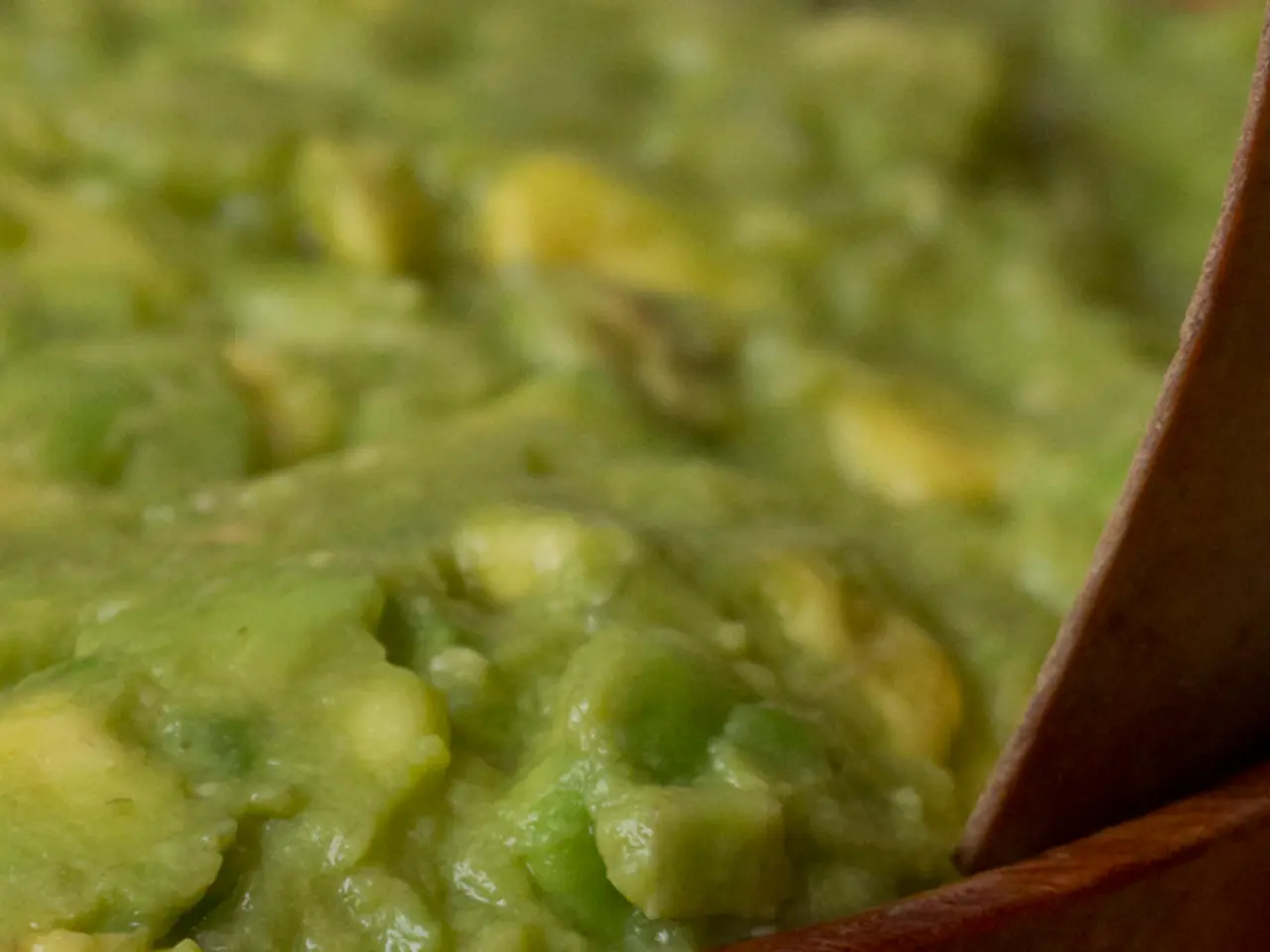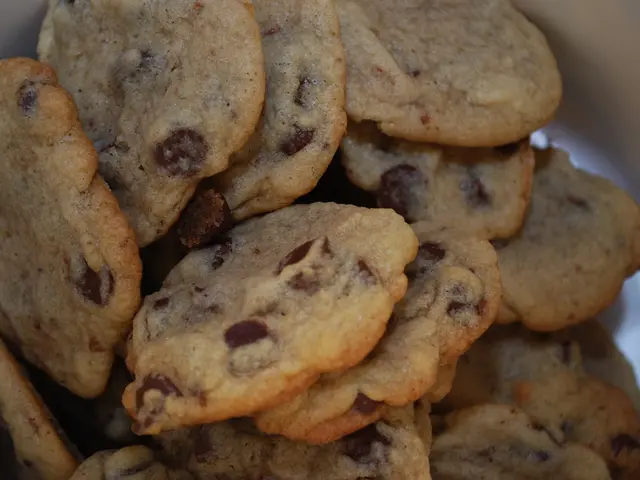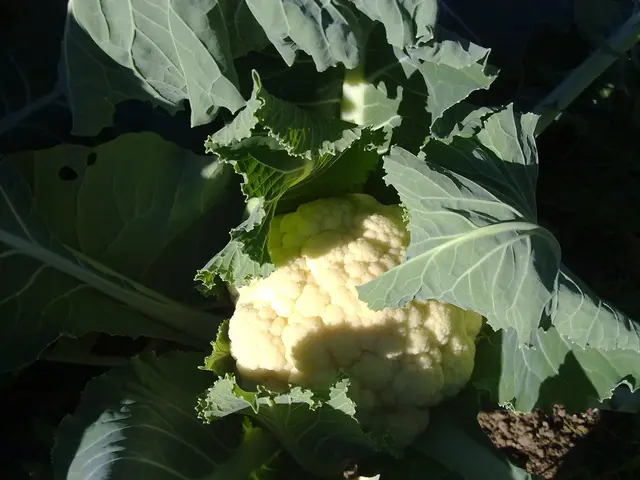Craving for specific foods: Understanding the triggers and strategies to minimize, substitute, and control food desires
Craving Chaos: Unraveling the Mystery Behind Food Cravings
Everybody gets hit by food cravings every now and then - an intense, seemingly uncontrollable desire for a specific food item, often junk food. It can be a nightmare, especially when you're trying to stick to a healthier diet. But fear not! This guide is here to help you navigate through the cravings jungle and conquer your hunger monsters.
Let's dive into the hungry beast that is a food craving. These cravings can be triggered out of the blue or they might rear their heads after being reminded of a certain food, like an ad for chocolate sending your thoughts spinning towards the sweet, creamy goodness.
Brain Power at PlayMemory, pleasure, and reward-related brain regions play a significant role in food cravings. An imbalance of hormones, such as leptin and serotonin, also contributes to these desires. The appetite centers of the brain are involved too, although these cravings are typically separate from actual hunger.
Hormonal HellA plethora of factors can influence a person's food cravings. Hormonal fluctuations during the menstrual cycle could create cravings, and the reasons behind pregnancy cravings are still a topic of debate. In some cases, pica, the unnatural craving for non-food items like chalk or ice chips, might rear its ugly head.
Emotions, too, have a role to play. Comfort eating is a common response to emotional turmoil, for instance. Sometimes, the body might crave specific foods because it needs particular nutrients.
Cravings: The Picky and the HungryCravings fall into two main categories: selective and nonselective. Selective cravings are specific, like longing for your favorite chocolate bar or a particular brand of potato chips. Nonselective hunger, on the other hand, is a general desire to eat anything, which could be caused by actual hunger or dehydration.
Fighting the Food UrgeThere are several ways to conquer the mighty food cravings. Here are some suggestion you might find helpful:
- Stress ManagementChronic stress and emotional eating have a profound impact on health issues, and can create a tendency to reach for comfort foods. Taking steps to reduce stress levels can help manage food cravings and lead to a healthier lifestyle.
- Stay HydratedOften, hunger and thirst can produce similar sensations, leading people to confuse the feeling of thirst for hunger. Drinking plenty of water throughout the day can help manage food cravings and contribute to overall health.
- Get Enough SleepAdequate sleep is crucial for maintaining balance in the body's hormones. Getting enough sleep can help mitigate overeating and weight gain caused by hormonal imbalances.
- Eat Enough ProteinProtein-rich foods can help suppress appetite and reduce hunger hormones. A variety of protein-rich food options are available, from lean meats to plant-based sources like tofu and lentils.
- Chew GumChewing gum can help reduce both sweet and salty cravings by keeping the mouth busy and stimulating the production of saliva.
- Change the SceneryNew environments can help break old habits that contribute to food cravings. Try taking a walk, doing some exercise, or even calling a friend instead of giving in to the urge.
- Avoid HungerStrong feelings of hunger might lead to cravings for unhealthy, calorie-dense foods. Eating regularly can help manage these cravings by providing the body with the fuel it needs to function properly.
Healthy Swaps to the RescueWhen a craving for unhealthy food strikes, reaching for a healthier alternative can help manage the situation. Here are some suggestions for popular craving-inducing foods:
- Potato chips: Air-popped popcorn, salted nuts, or seeds can serve as healthier substitutes.
- Chocolate: Opt for dark chocolate with at least 70% cocoa for a sweet treat that provides antioxidants and other health benefits.
- Sugary sweets: Fresh fruit or dried fruit can help satisfy your sweet tooth without loading you up on unnecessary sugar.
- Soda: Reach for sparkling water with a squirt of lemon or lime for a refreshing, low-calorie alternative.
- Cheese: Try low-fat, low-sodium cheese or nutritional yeast as healthier options. Nutritional yeast offers a savory, slightly cheesy flavor and is rich in B vitamins.
In conclusion, food cravings are a part of life that most people experience from time to time. Managing these cravings requires understanding their underlying causes and employing strategies that cater to these root causes. Through a combination of nutritional choices, lifestyle adjustments, and stress management techniques, you can learn to tame the beast of food cravings and keep your health and wellbeing on track.
- Food cravings can strike at any time, even the sight of an ad for chocolate can invoke thoughts of sweet, creamy goodness.
- Brain regions associated with memory, pleasure, and reward can significantly influence food cravings.
- Imbalances in hormones like leptin and serotonin can contribute to food cravings.
- Appetite centers of the brain play a role in cravings, although they are usually separate from actual hunger.
- Hormonal fluctuations during the menstrual cycle may lead to cravings, or pica, the unnatural craving for non-food items like chalk or ice chips.
- Comfort eating is a common response to emotional turmoil, such as depression or anxiety.
- Cravings can fall into two main categories: selective cravings for specific foods like chocolate or potato chips, and nonselective hunger for any food.
- Stress management can help reduce emotional eating and manage food cravings, leading to a healthier lifestyle.
- Staying hydrated can help manage food cravings and contribute to overall health.
- Getting enough sleep can help maintain balance in the body's hormones and mitigate overeating and weight gain caused by hormonal imbalances.
- Eating enough protein can help suppress appetite and reduce hunger hormones.
- Chewing gum can help reduce both sweet and salty cravings by keeping the mouth busy.
- Changing the scenery can break old habits and help manage food cravings, try exercise or calling a friend instead of giving in.
- When a craving for unhealthy food strikes, consider healthier alternatives like dark chocolate, fresh fruit, or nutritional yeast.
- Through a combination of nutritional choices, lifestyle adjustments, and stress management techniques, you can learn to control food cravings and maintain your health, wellbeing, and overall lifestyle. This includes healthy food choices, fitness and exercise, mental health awareness, and proper nutrition.








